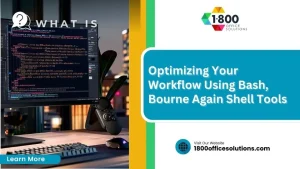What Is a Bill of Materials (BOM): Key Components Explained
Are you struggling to manage production costs and material inventory effectively? This article explains the Bill of Materials (BOM) and its impact on manufacturing processes. It clearly outlines the structure of a BOM, provides tips on creating an effective document, and discusses common challenges and best practices. Readers will gain practical insights to improve production planning and operational efficiency.
What Is a Bill of Materials (BOM) and Its Role in Manufacturing?

A bill of materials (BOM) serves as a detailed list of components required for the production process, ensuring all necessary items are accounted for. This document is essential in providing clear information for manufacturing teams.
The BOM guides the software used in planning and tracking manufacturing activities, aligning design specifications with production needs. It assists in streamlining operations by ensuring every element is correctly listed and easily referenced.
The document plays a critical role in managing design information during the build of materials process. It provides clarity on the structure and quantities of components, helping to minimize errors during production.
A BOM effectively handles the complexity of manufacturing by breaking down projects into manageable parts. It supports teams in organizing design elements and streamlining the production process, leading to smoother workflows.
The Structure of a Bill of Materials

The section outlines the detailed components of a manufacturing bill of materials, including quantity, plastic parts, server components, and computer system elements. It explains how these parts organize hierarchically and streamline production while ensuring clear communication of design and production needs.
Detailed Components of a BOM
The manufacturing bom encompasses various elements such as a detailed parts list, component specifications, and quantity data that support efficient production planning. This structured approach integrates a document management system and supports tasks across human resources, ensuring every department benefits from clear production guidelines.
The sap bom serves as a crucial tool in linking design aspects with required production materials, reflecting expert oversight in manufacturing processes. This approach streamlines operations by clearly organizing a parts list and using a document management system to keep all team members, including human resources, informed and aligned.
Hierarchical Organization of BOM Elements
The hierarchical organization in a BOM establishes a clear framework that functions as a single source of truth for inventory details and design data. This method supports efficient management by ensuring that every component, from data center equipment to standard parts, is recorded with precision, aiding cost accounting and smooth production tracking.
This structure enables teams to maintain thorough inventory records and allocate resources effectively. By reflecting real-time data within a unified system, organizations can improve oversight and management practices, ultimately contributing to accurate cost accounting and operational efficiency.
The Importance of Using a Bill of Materials

This document streamlines production processes across a software supply chain, supports cost management throughout the product lifecycle, integrates genius erp for better machine coordination, and directs packaging operations. It offers a clear framework for collaborative workflows, ensuring teams have the essential tools for accurate planning and production management.
Streamlining Production Processes
The BOM improves manufacturing resource planning by clearly outlining the structure and quantity of components, which enhances communication between production teams and suppliers. It also supports integration with modern techniques like 3d printing, resulting in efficient and timely production adjustments that account for variables such as wind speed during material handling.
By providing a detailed blueprint for parts and assemblies, the document enables the alignment of design and process requirements, reducing production delays and errors. This precise reference minimizes risks in manufacturing environments where factors such as wind speed affect material staging, ensuring optimal performance and adherence to deadlines.
Enhancing Cost Management
The bill of materials supports enhanced cost management by streamlining inventory control and reducing financial waste in production processes. Using free bom software allows organizations to track every stock keeping unit efficiently while integrating enterprise resource planning tools that optimize product lifecycle management.
Accurate BOM data contributes to improved budget oversight by ensuring every component is properly managed and accounted for. This approach offers practical insights to refine workflows, ultimately saving resources through better inventory control and effective integration of enterprise resource planning systems.
Facilitating Collaborative Workflows
The bill of materials significantly contributes to simplifying collaborative workflows by acting as a unified software bill that teams can reference, reducing risk inherent in production discrepancies. The clear layout, similar to a well-organized table of contents, allows team members to view the precise dimension and specifications of every component, ensuring that all parties, including those using platforms like HubSpot, are aligned on project objectives.
By streamlining the communication process, the document serves as an essential hub for coordination, supporting cross-functional teams to work in a synchronized manner. This structured approach minimizes misunderstandings and mitigates risk while offering practical insights, directly addressing common pain points and facilitating better decision-making among departments.
How to Create an Effective BOM

The process begins with defining product specifications, including a clear definition of each component like the chair’s design, followed by incorporating precise material details and establishing a robust system for tracking changes and versions. This ensures production clarity even when severe weather and wind impact the environment.
Defining Product Specifications
Defining product specifications begins with comprehensive research and a commitment to innovation, ensuring that every specification foots a solid technical foundation. The approach practiced by an original equipment manufacturer integrates SBOM insights to meet design requirements while addressing production challenges.
The clear articulation of product specifications is essential in establishing guidelines that can be reliably referenced throughout the production cycle. This method, supported by detailed research and practical examples, allows teams to incorporate industry standards and SBOM data into designs, fostering innovation and precision in each phase.
Incorporating Material Details
The process of incorporating material details involves careful documentation of each element used in manufacturing, ensuring specifications align with operational parameters and environmental challenges such as coastal hazards. It is vital to factor in potential flood risks and employ strategies that allow for accurate tracking, similar to how radar systems monitor changing conditions.
Integrating material information systematically supports a sound budget and streamlines production schedules in manufacturing. By assessing each component’s resilience and compatibility with diverse conditions, professionals can better manage resources and mitigate interruptions during unforeseen events like heavy flooding.
Tracking Changes and Versions
Tracking changes and versions in an engineering bill of materials is crucial for ensuring data accuracy and minimizing vulnerability in the construction process. This practice serves as a resource for quality control and risk management by recording revisions, facilitating error detection, and ensuring consistency between design specifications and production requirements.
By consistently monitoring modifications, organizations mitigate challenges linked with outdated information and potential resource misallocation. This method empowers teams to address concerns promptly, providing a clear reference to verify every update, thereby supporting effective construction and robust management of the manufacturing process.
Common Types of BOMs

This section covers key BOM types: the manufacturing, engineering, configurable, and multi-level BOM. It explains how each format aids in quality control, procurement, and managing scrap. The discussion also highlights the role of tools like Microsoft Excel to enhance accessibility and streamline processes for effective planning and precision in production.
Manufacturing BOM
The manufacturing BOM acts as a precise guide for outlining component details, including the unit of measurement for each piece, which developers rely on during new product development. This document enables a company to streamline production and coordinate information through the internet, ensuring all components align with design and cost expectations.
The manufacturing BOM supports detailed planning by specifying component quantities and measurement criteria, vital for developers in new product development. Companies use this structured approach to overcome coordination challenges and ensure accurate tracking, with developers leveraging internet tools to share information and resolve issues promptly.
Engineering BOM
The engineering bill of materials supports efficient supply chain management by aligning the technical design with material requirements planning, ensuring that every invoice and component detail is accurately recorded. This document facilitates smoother transitions from prototype to full-scale production by maintaining consistency between design specifications and actual materials used.
Through a well-structured engineering bill of materials, project teams can streamline inventory tracking and manage production schedules effectively. The document plays a vital role in reducing errors in invoicing and material requirements planning, providing a clear reference point for seamless supply chain management during the transition from prototype to production.
Configurable BOM
The configurable BOM streamlines materials management by adjusting component lists to suit variations in raw material specifications and production needs. It serves as a vital tool in ensuring traceability and accuracy in accounting practices, offering flexibility that minimizes delays and supports real-world production changes.
This approach assists production teams in aligning inventory data with evolving design requirements, thereby strengthening traceability protocols and materials management practices. By integrating this configurable BOM system, organizations can quickly accommodate changes in raw material availability while ensuring that accounting records remain accurate and dependable.
Multi-Level BOM
Multi-Level BOM organizes data in layers that support complex manufacturing processes. This structure allows teams to apply bom in engineering principles, improving bom management by segregating various assembly stages while maintaining data consistency. The clear use of color coding in software development documentation further assists in distinguishing component tiers, offering practical insights for precise production tracking.
Multi-Level BOM offers a systematic approach that supports efficient software development and production processes. Industry professionals often apply this model to refine bom management, ensuring that each layer reflects accurate details and specifications. The method leverages visible color markers to underscore progress and clarity, addressing common challenges in scaling production effectively.
Challenges in Managing Bill of Materials

Effective BOM management faces challenges in ensuring accuracy and consistency, adapting to design changes, and integrating with other systems. This concept provides a detailed description and serves as a bookmark for production teams, acting as an engine that supports cost control. Subsequent topics offer practical insights to overcome these obstacles.
Ensuring Accuracy and Consistency
The process of ensuring accuracy and consistency in a bill of materials involves applying a reliable formula to verify each component against expected quality standards, reducing errors that can disrupt production. This method benefits from artificial intelligence tools that swiftly cross-check data, thereby clarifying the sbom meaning for every element involved.
Organizations use proven techniques to maintain precise records of components, ensuring that quality remains high throughout production. Experts apply data-driven practices that combine a predetermined formula with real-time insights, enabling teams to address challenges with artificial intelligence and improve overall consistency.
Adapting to Design Changes
Adapting to design changes requires a robust approach to bom in management and strong data management practices to keep projects on track. An efficient pdf repository supports swift information sharing among teams, allowing organizations to quickly adjust specifications while maintaining finance oversight on resource allocation.
Managing design adjustments calls for precise tracking of modifications and active monitoring of component updates to enable smoother transitions during production. Expert teams use integrated systems to review and verify changes, ensuring that data management remains consistent and finance considerations are properly reflected throughout the process.
Integrating With Other Systems
The integration of BOM systems with other platforms poses challenges that affect industries such as the automotive industry. Manufacturers need to ensure that purchasing data, vendor information, and technical specifications, including android compatibility, seamlessly connect with existing enterprise systems, enabling a smooth exchange of critical data via reliable search engine frameworks.
Organizations benefit from robust integration strategies that offer direct access to real-time updates and detailed component data. This approach not only optimizes purchasing workflows but also simplifies collaborations with vendors and supports comprehensive search engine functionalities for tracking design revisions.
Best Practices for BOM Management

Regular review and updates, utilizing BOM software solutions, and training team members on BOM usage are key for effective management. Consistent monitoring ensures hierarchy adherence, while accurate software composition analysis adjusts the price and API details. Clear guidelines help teams respond to changes, even when rain disrupts normal operations, ensuring production processes remain efficient and aligned.
Regular Review and Updates
Regular review and updates in boms support a deep understanding of every ingredient used in the product manufacturing process. This practice helps teams spot discrepancies before they turn critical, ensuring that the product is fully aligned with the planned specifications even when challenges, such as a thunderstorm, disrupt normal operations.
Implementing routine checks on boms allows for proactive adjustments and accurate reflection of material changes. Organizations find that continuous review improves overall quality, equipping teams with practical insights to consistently deliver a reliable product while maintaining a clear understanding of project dynamics.
Utilizing BOM Software Solutions
Implementing a robust software system can streamline BOM management and optimize workflow. By integrating advanced audit trails and monitoring version updates, companies can maintain data integrity and simplify tracking, all while leveraging real-time updates from rss feeds for continuous improvement.
Effective adoption of a dedicated software system supports efficient BOM handling and reduces manual errors. Teams benefit by accessing an integrated platform that facilitates quick audits, seamless version management, and organized workflow adjustments, ensuring clear communication across departments.
Training Team Members on BOM Usage
Training team members on BOM usage builds confidence in managing the supply chain and integrates tools like software as a service platforms, ensuring that each user understands the specific steps outlined in a bill materials example for seamless production. Clear instructions through a dedicated app guide personnel in verifying permalink details and practical applications while addressing common challenges during implementation.
Experts stress the value of hands-on training sessions, which enable teams to master the basics while efficiently utilizing the latest app features for BOM management. This dedicated approach not only minimizes errors but also reinforces best practices in supply chain management, offering actionable insights that drive improved outcomes across the board.
Conclusion
Understanding a bill of materials guides production teams by ensuring every necessary component is accurately documented and readily accessible. The document streamlines manufacturing processes and aligns design specifications with production needs. It reinforces clear communication among departments while safeguarding cost efficiency and resource management. Ultimately, mastering BOM principles empowers organizations to optimize production workflows and maintain operational excellence.











